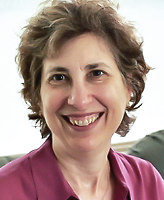APA Needs More Involvement by Women Members
Abstract

American psychiatry has been way ahead of most other medical specialties worldwide in terms of the role of women physicians. The number of women physicians in the United States remained at a low stable rate of 4 percent to 6 percent from 1910 to the 1960s, but increased dramatically beginning in the 1970s. Psychiatry has been the second most frequently chosen specialty by women physicians (after pediatrics).
In 1972, APA appointed a Task Force on Women In 1986, Leah Dickstein, M.D., and Carol Nadelson M.D., published Women Physicians in Leadership Roles(American Psychiatric Press Inc.). Probably the first book of its kind, it was a unique compilation of personal histories of women physicians as leaders in medicine, primarily from psychiatry’s viewpoint. A new book edited by Donna Norris, M.D., Geetha Jayaram, M.D., and Annelle Primm, M.D. titled Women in Psychiatry: Personal Perspectives, which featured 21 women psychiatrists, is posted at http://www.appi.org/SearchCenter/Pages/default.aspx?k=women in perspective.
APA has been fortunate in having several women psychiatrists in the highest leadership position during the past three decades. To date, there have been eight women APA presidents: Nadelson, (1985-86), Elissa Benedek, M.D. (1990-91), Mary Jane England, M.D. (1995-96), Marcia Goin, M.D. (2003-04), Michelle Riba, M.D. (2004-05), Nada Stotland, M.D. (2008-09), Carolyn Robinowitz, M.D. (2007-08), and Carol Bernstein, M.D. (2010-11). Each of them has made highly significant contributions to APA and to the field of psychiatry. Of course, leadership does not mean presidency only, but also includes positions at other levels. Currently a number of women psychiatrists are serving as chairs of councils and committees in addition to other important roles at national and district branch levels. Nonetheless, it is important to make opportunities available to all who are competent and desire to expend their creative talents in this sphere. Greater diversity in leadership is essential for organizational growth and development.
I asked Judith Kashtan, M.D., a member of APA’s Assembly, Board of Trustees, and Membership Committee, to summarize issues facing women in APA and suggest some remedies. Below are her comments.
Judith Kashtan M.D.

Women are one of the minority/underrepresented groups in APA. While it may seem strange that a class of members consisting of half the population is considered a minority, it is true that women have been historically underrepresented in the medical profession, as Dr. Jeste notes.
In 1975, 20 percent of psychiatry residents were women, and women made up 12 percent of APA membership. By 2010 women represented 56 percent of psychiatry residents and 34 percent of APA members. This increase reflects women’s changing roles in our society in general. If you’d like to read a fascinating history of that evolution, check out Gail Collins’ When Everything Changed: The Amazing Journey of American Women From 1960 to the Present.
While more women have entered psychiatry, they are dropping out of APA at higher rates than men. This attrition is most pronounced among younger members. For APA to remain vital, we need to serve women’s needs better. What is going wrong? Why do women choose to not join APA in the first place or drop out early in their careers?
While there is a wealth of resources at APA for women—mentors, colleagues, potential friends, practice resources, etc.—there also seems to be a disconnect between grassroots members and those resources. Everyone is busy, and, as a group, women with children may be the busiest of all. Even though men are doing more parenting than in the past, studies show that women still spend more of their time on household management and child care.
Since women are not underrepresented in training programs or the workplace anymore, they don’t need to join APA or their district branch (DB) to have contact with other women psychiatrists—they are working with them every day.
Younger women often have limited financial resources and large educational loans to repay, so APA needs to provide clear value for money spent.
Here are some ideas we are considering—some of them are not restricted to women, but might be beneficial for us. The goal is to make APA an ever more welcoming professional “home” with easily accessible supports for our ever more multitasking members.
I set up a Web site for my practice a few years ago. It required a considerable investment of time and money, but I was amazed at the number of patients who found me through it. APA could help expedite that process by offering members templates to create such Web sites. Plans are also being considered to create a customized electronic health record for psychiatrists that APA members could purchase at a steep discount.
Younger members communicate increasingly through social media. We are giving more attention to APA’s presence in that space, as well as making APA’s Web site as accessible and relevant as possible.
Envision an area of the Web site like Yahoo Answers—check it out if you haven’t seen it before. There, users post questions that others answer. Answers are rated by members, and the highest ranked ones migrate to the top of the list.
Such a service would be a valuable resource for time-pressed members, who could post questions about a clinical or practice issue on the fly and anticipate a quick and helpful response from a national group of peers and experts.
Similarly a mentorship area of the Web site could quickly link up women who have particular areas of expertise with younger members with similar interests.
Only 8 percent of women members belong to the APA Women’s Caucus. We are looking at ways to improve our communications with all women members without requiring them to go through a complicated “opt in” process.
Studies show that women travelers often prefer hotel floors that cater to their needs. At future annual meetings, we’d like to designate one or two hotels, or floors, for women. We might provide yoga classes, discounts on spa services, and lounges where women could meet and network, for example.
In addition, a panel of women APA leaders or experts in certain areas of practice could be made available to give webinars or attend DB meetings.
Does your DB even have a women’s committee? If not, they are easily formed with little overhead or time spent. If you’re interested in starting one, let me know. In Minnesota we hold Saturday brunches for all the women in our DB at members’ homes every four to six months, with babysitting provided.
What do you think of these suggestions? Do you have others? If so please contact me at [email protected]. ■
Judith Kashtan, M.D., is APA’s Area 4 trustee, an Assembly representative for Minnesota, a member of APA’s Membership Committee, and a clinical adjunct professor at the University of Minnesota.



